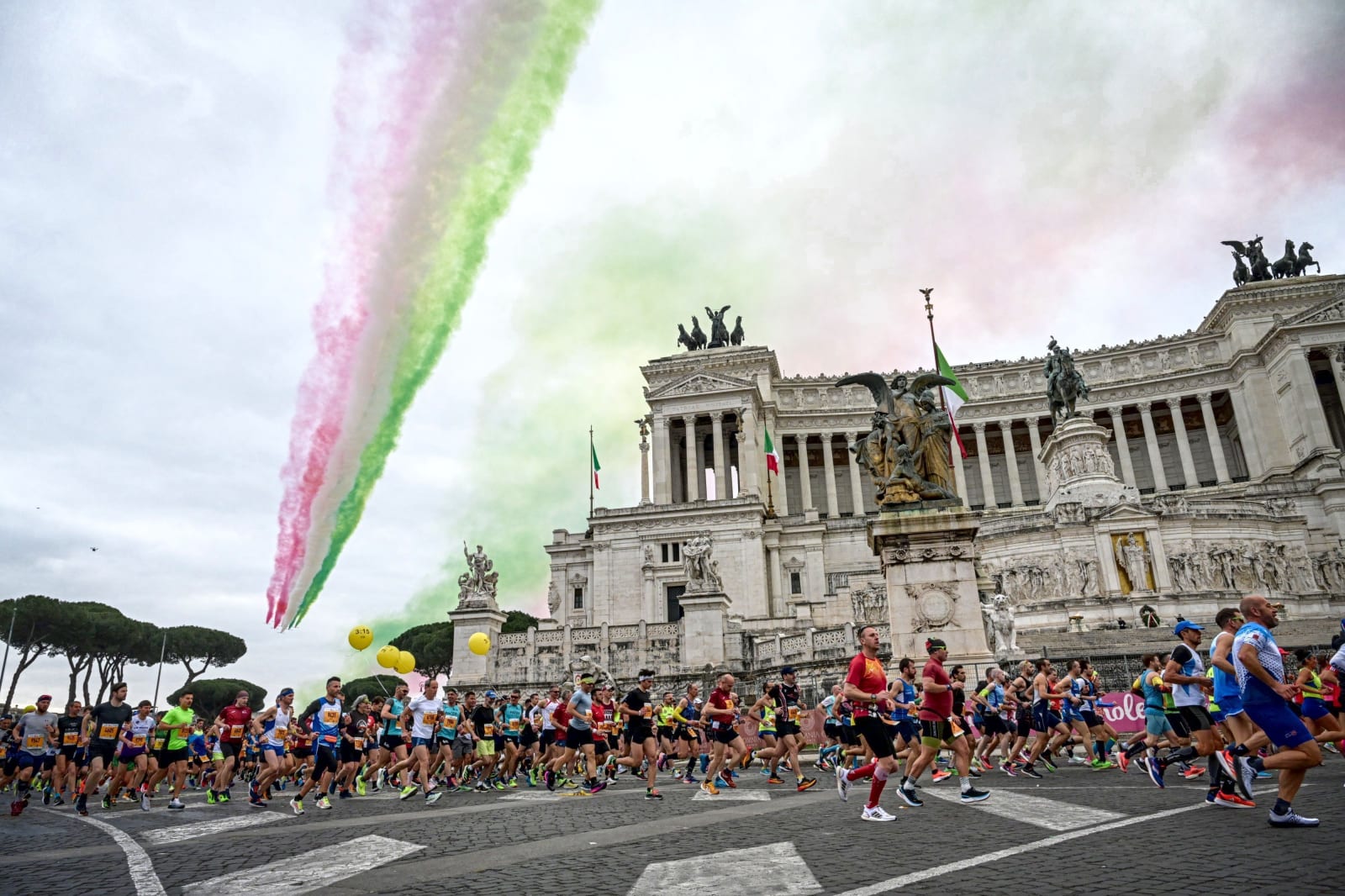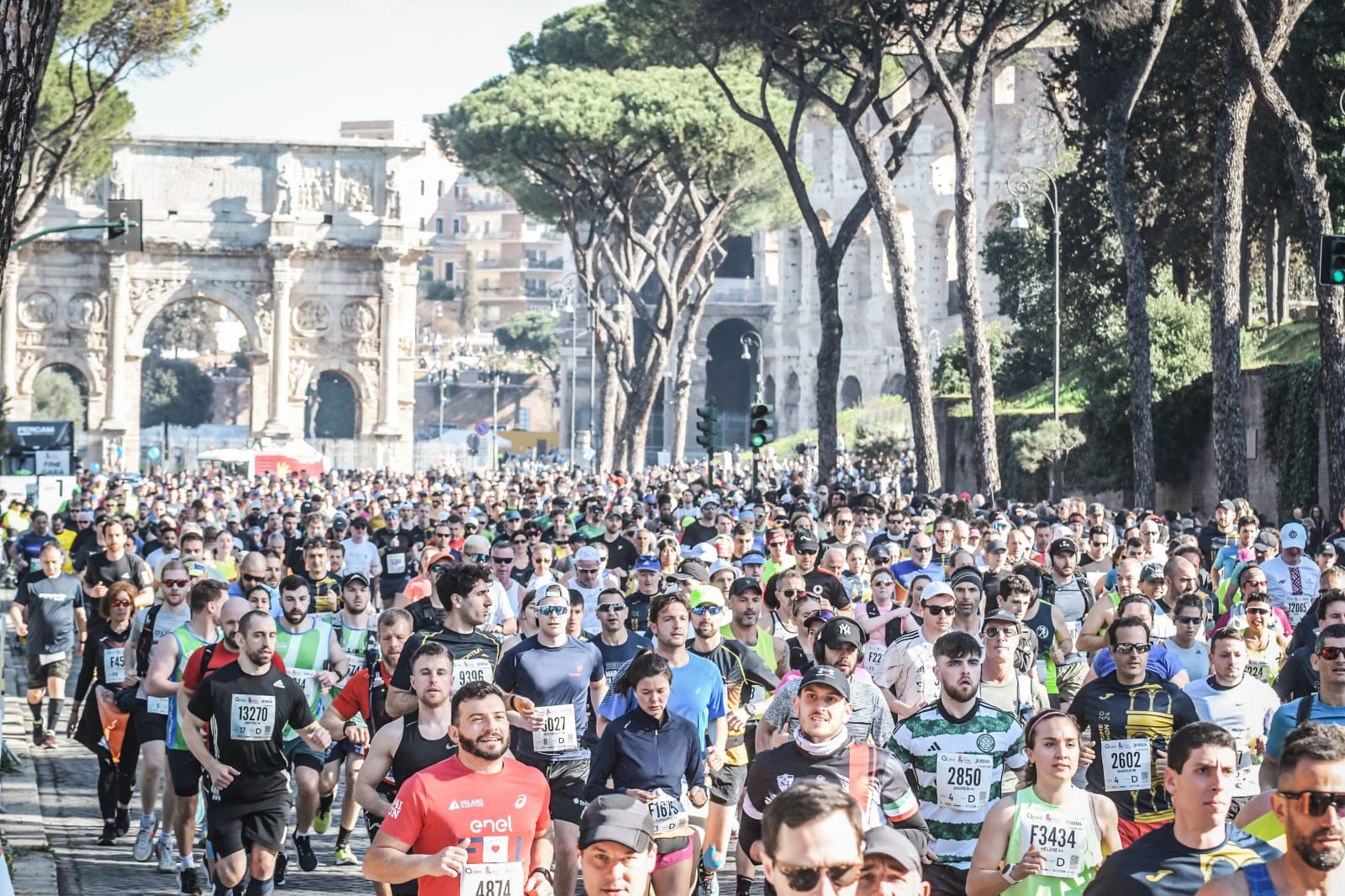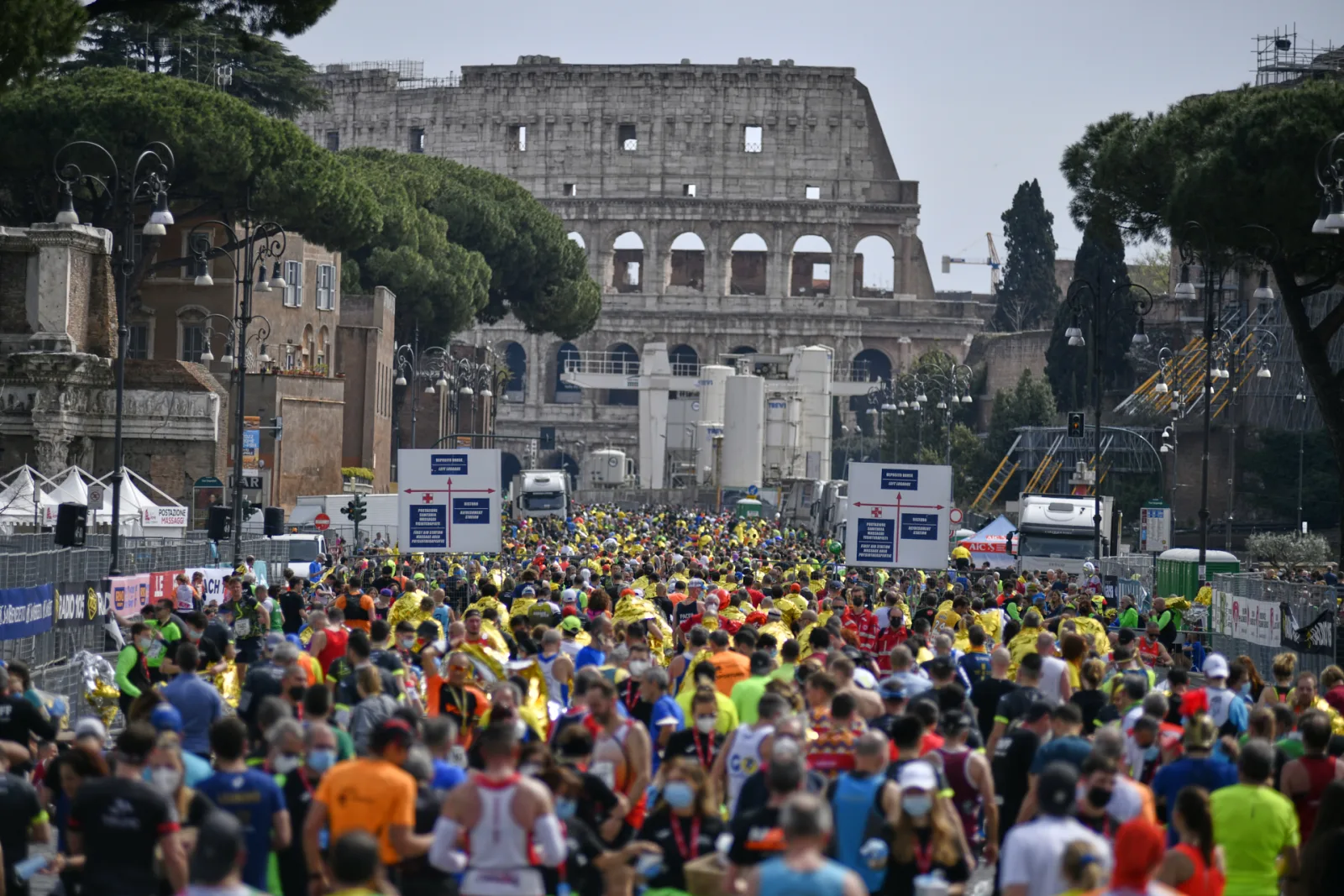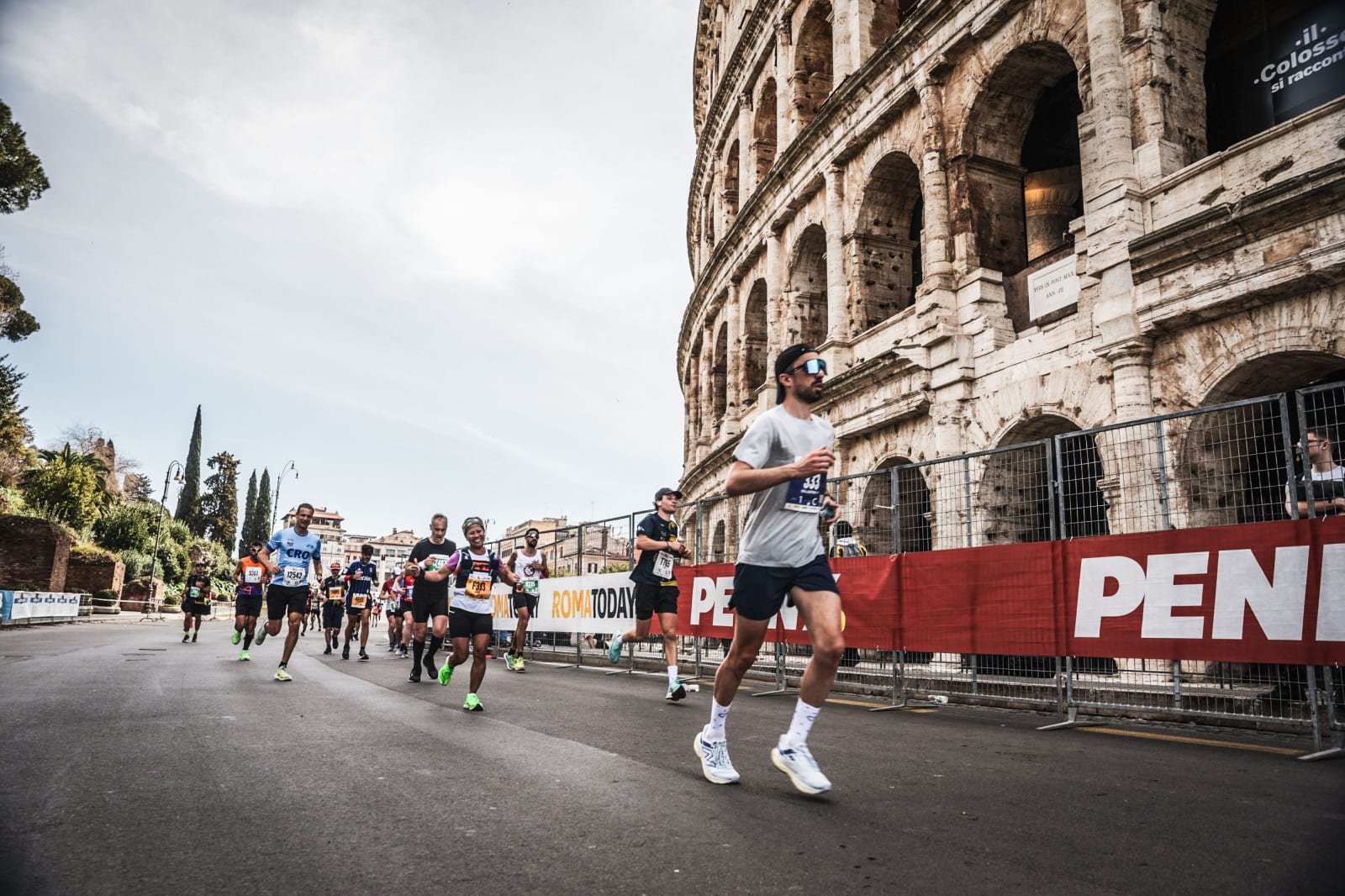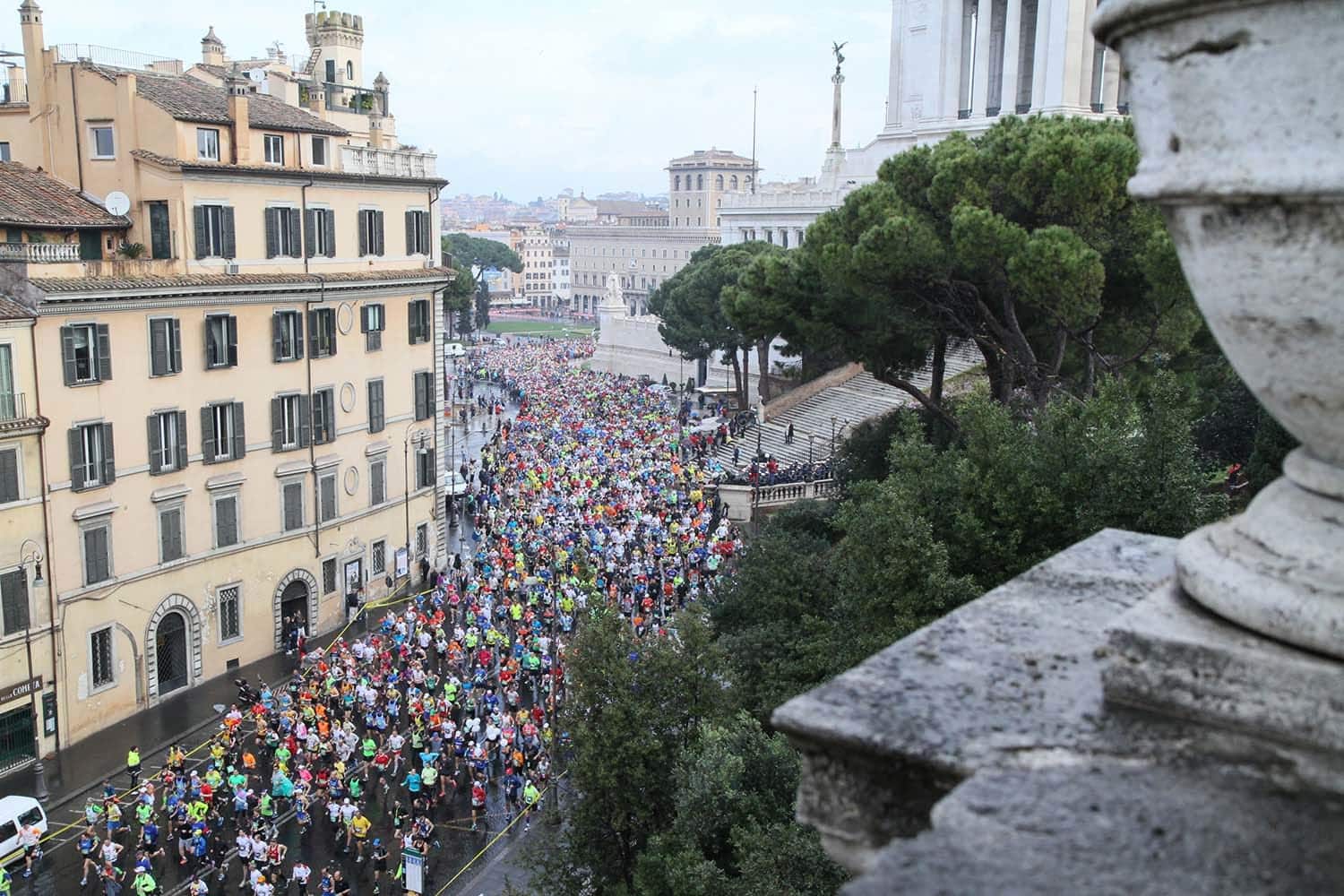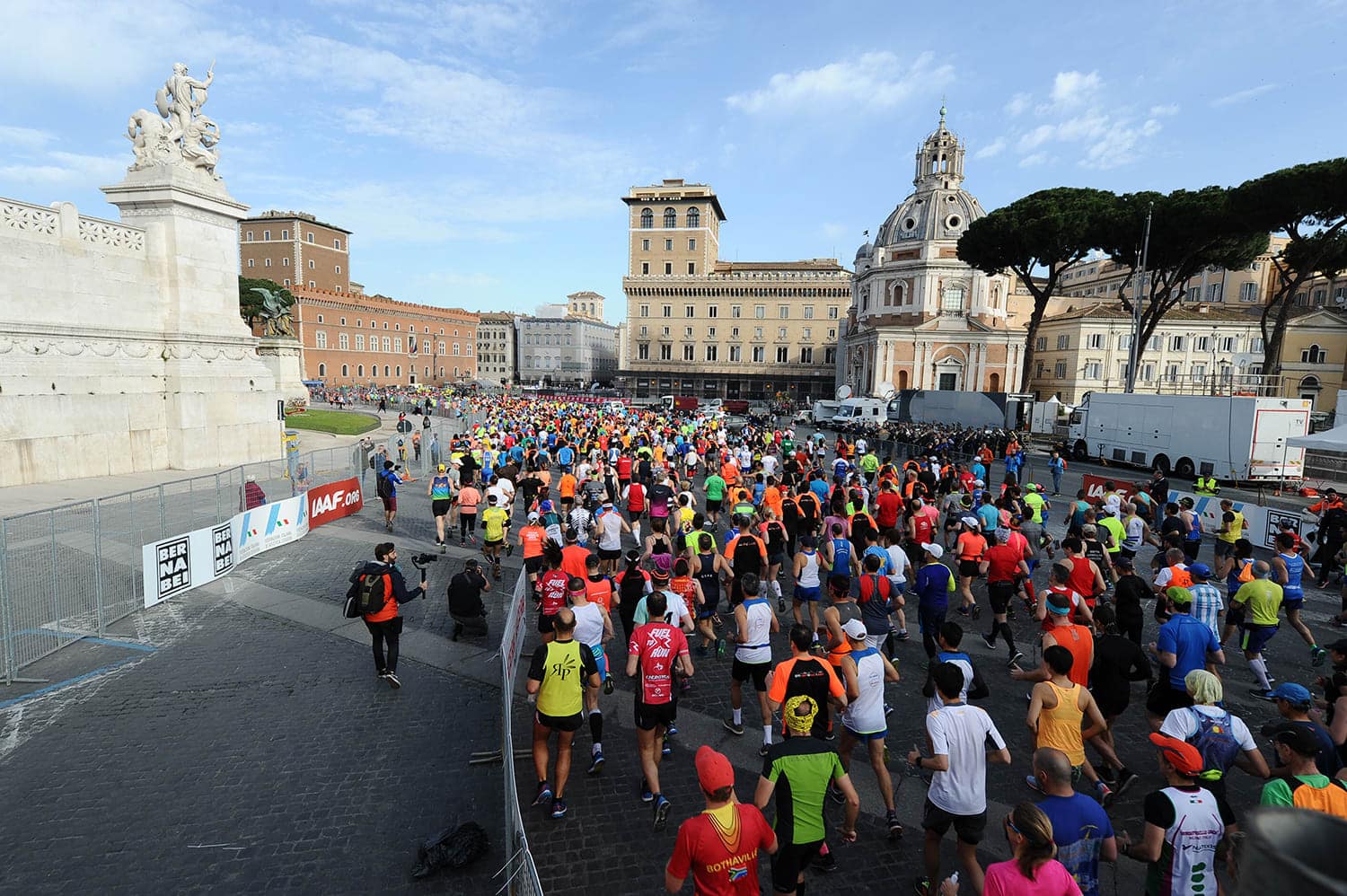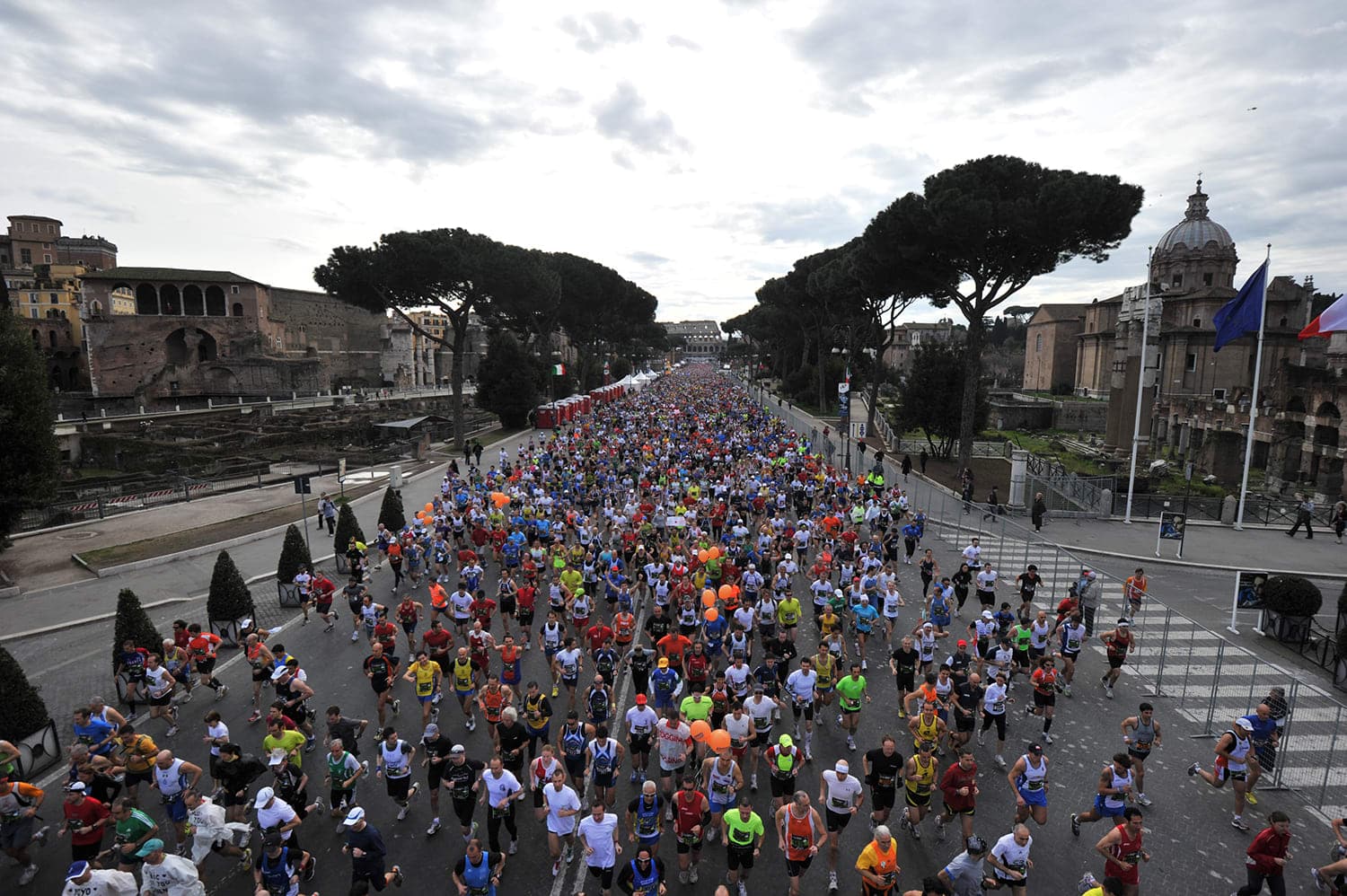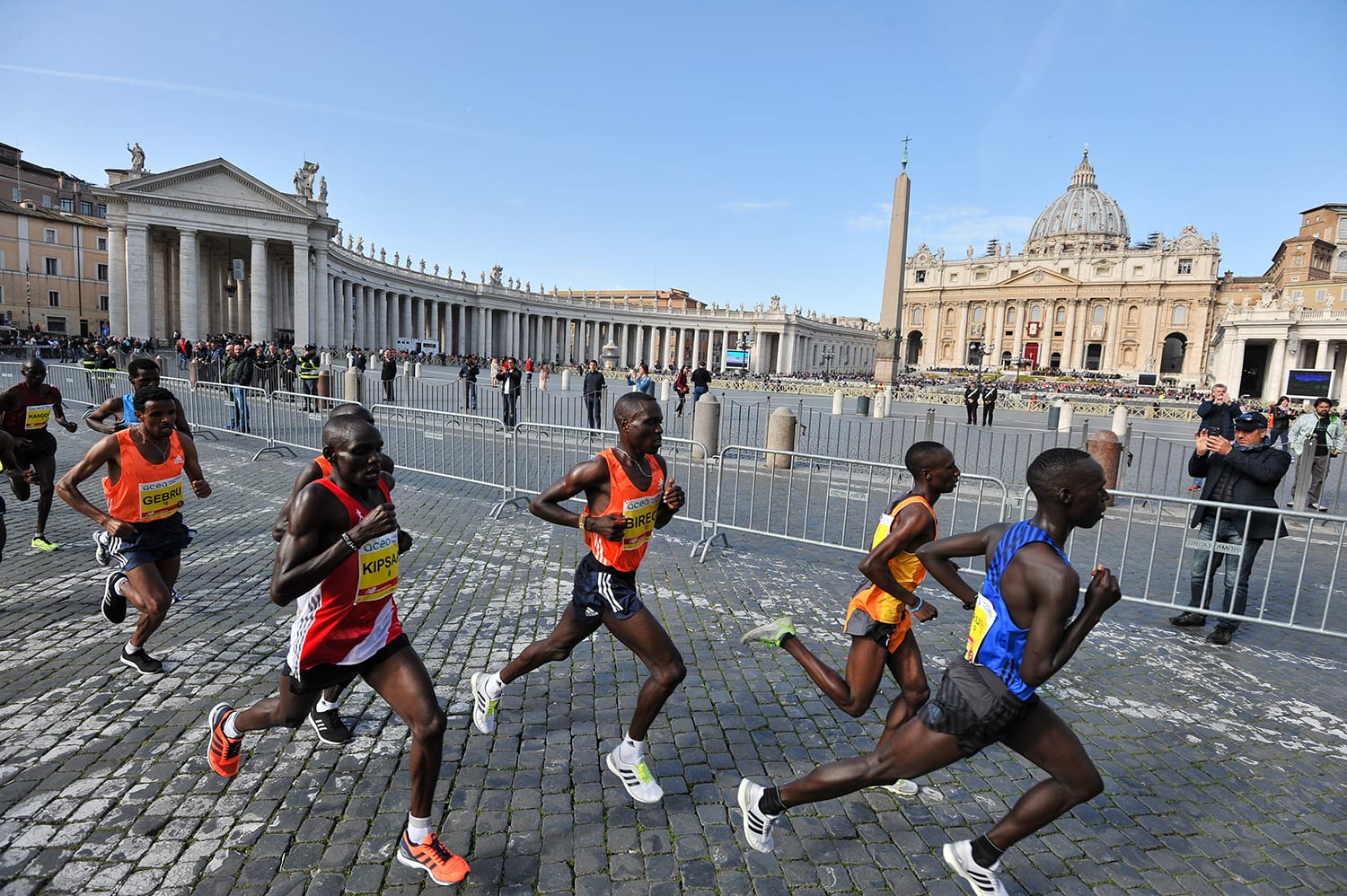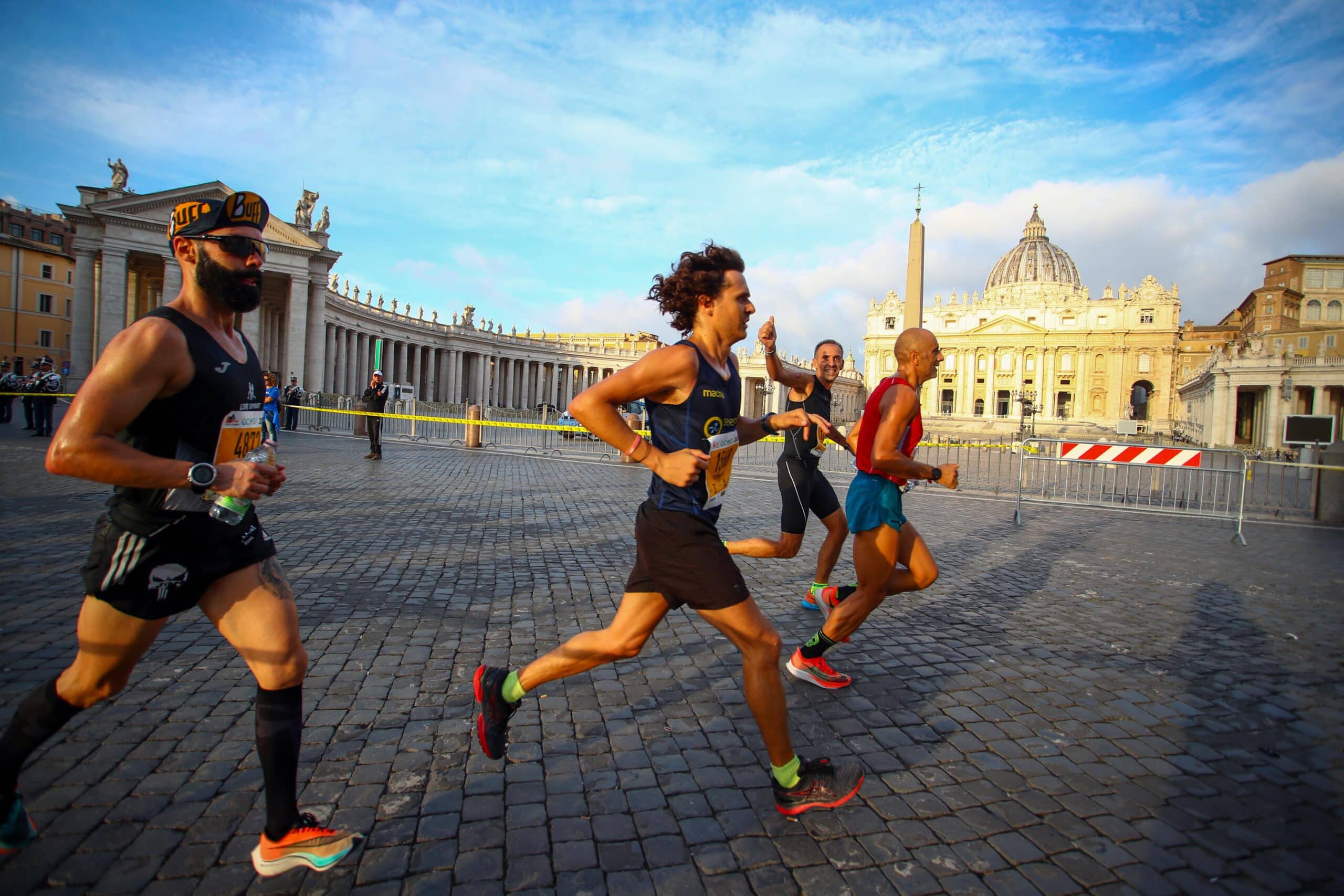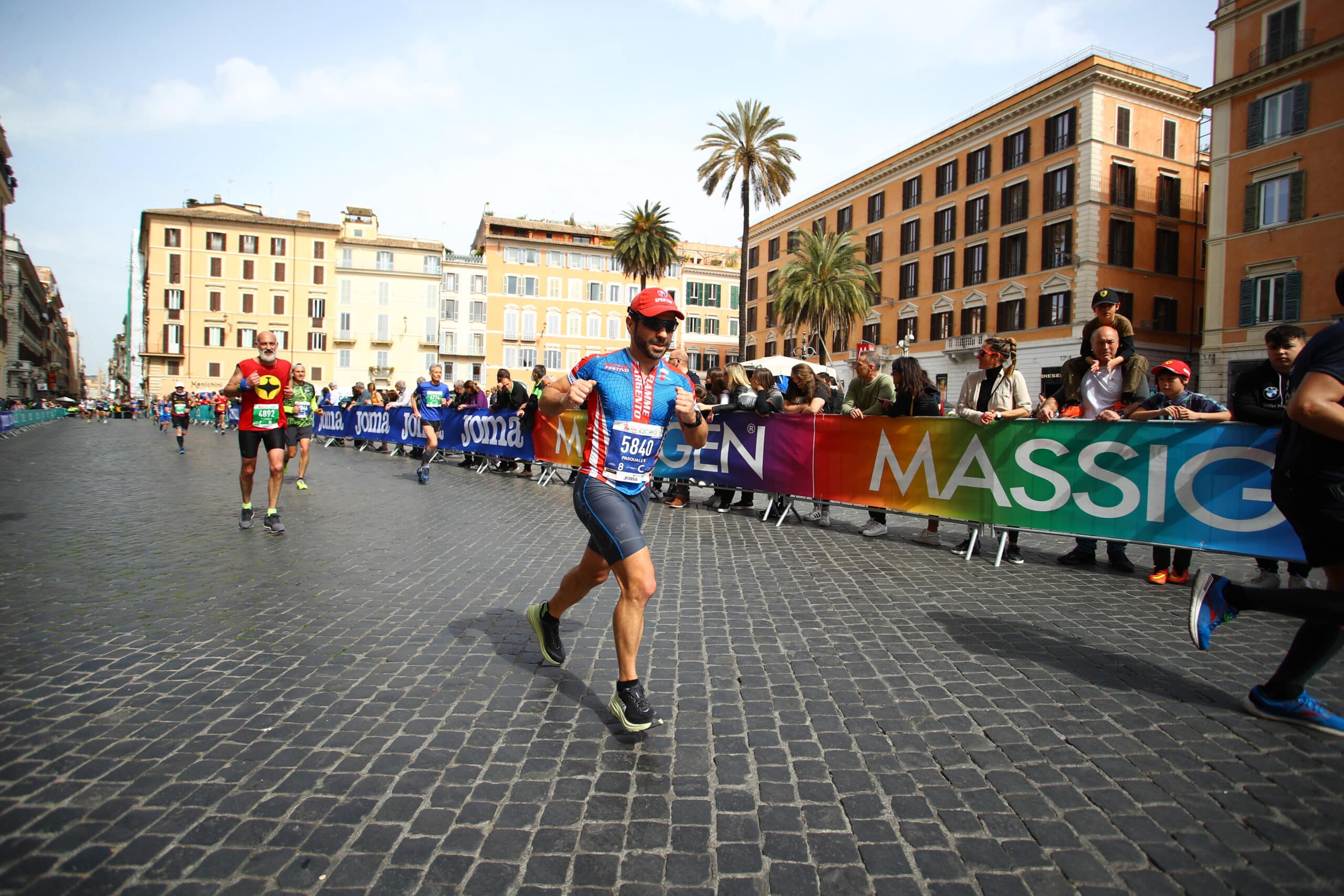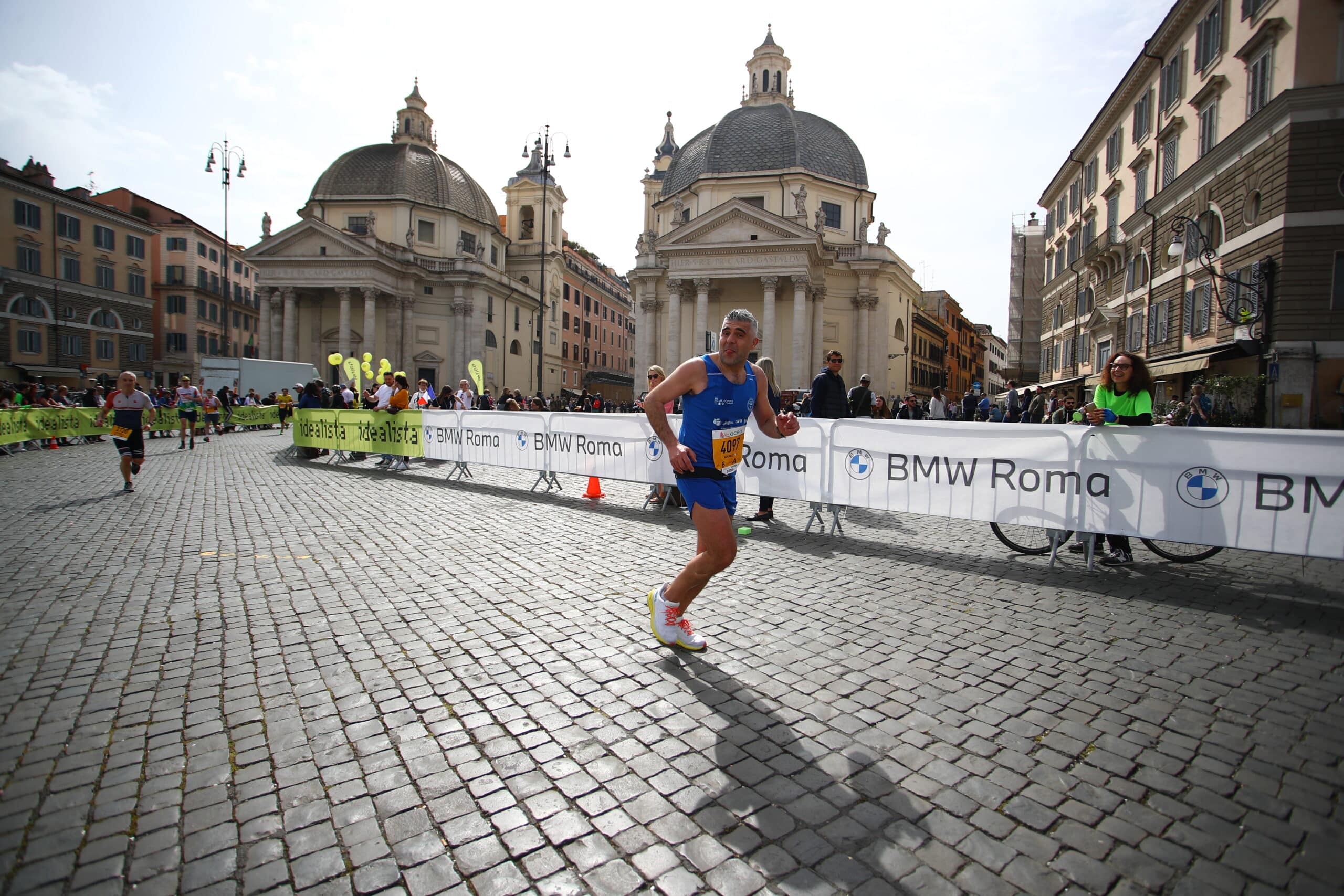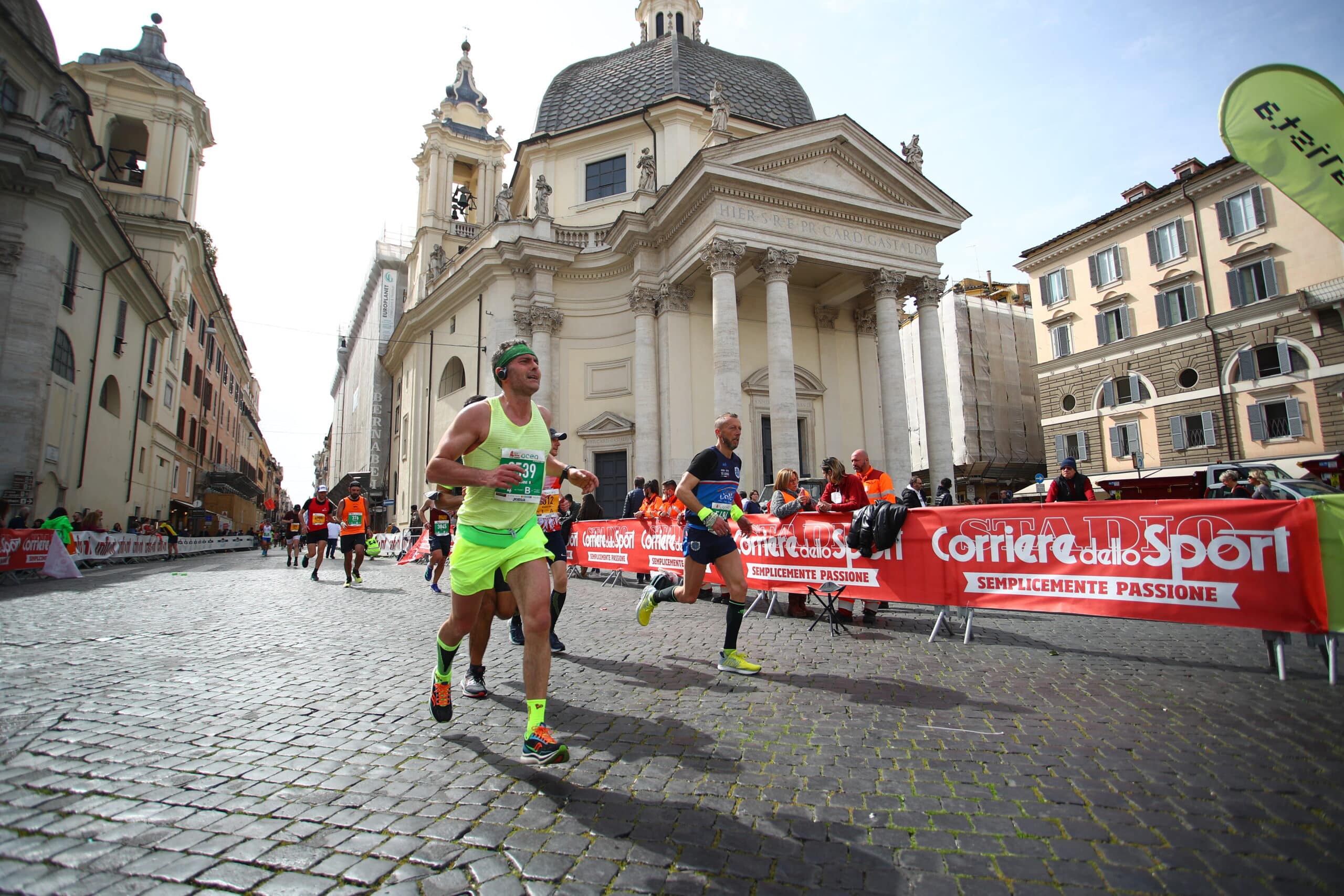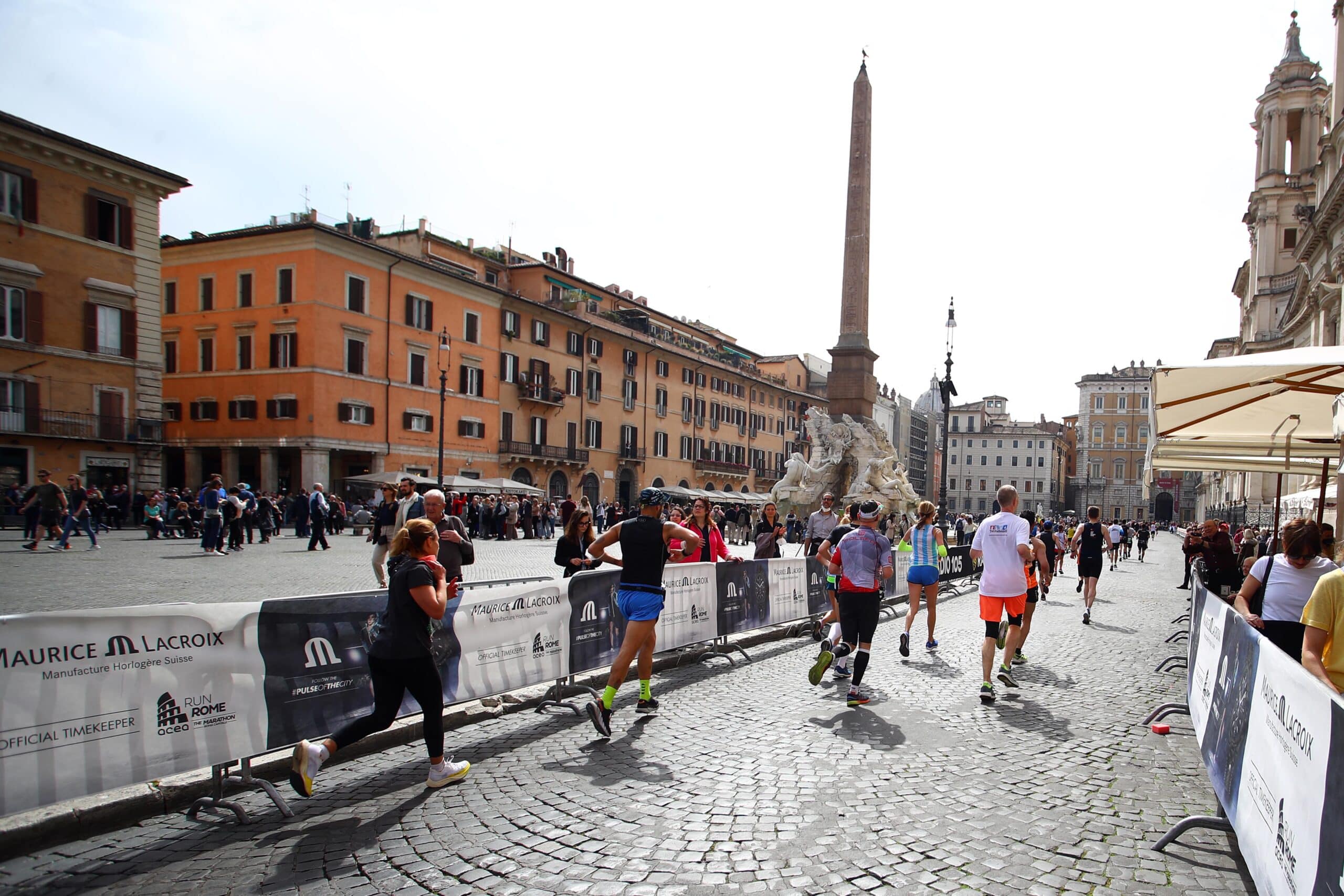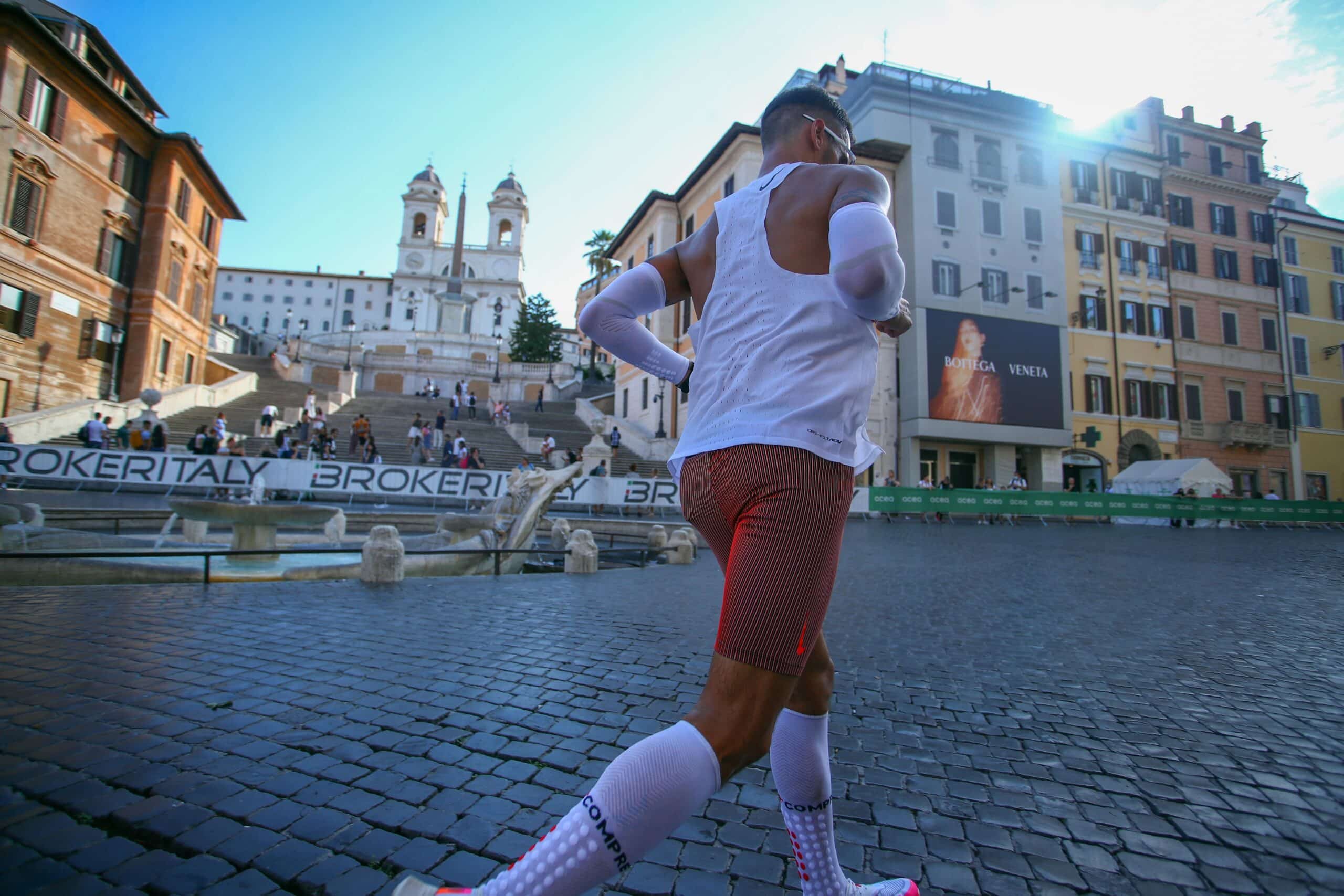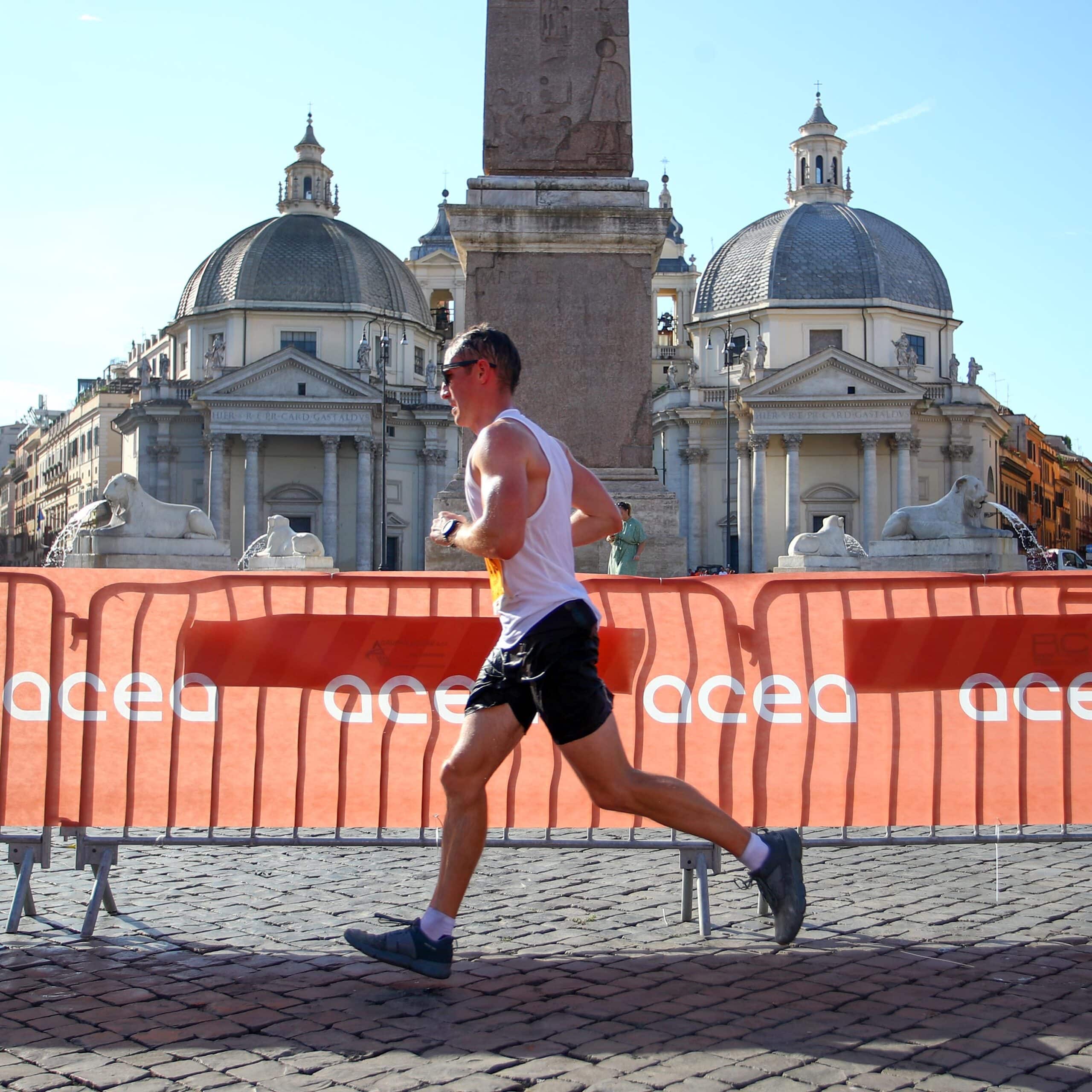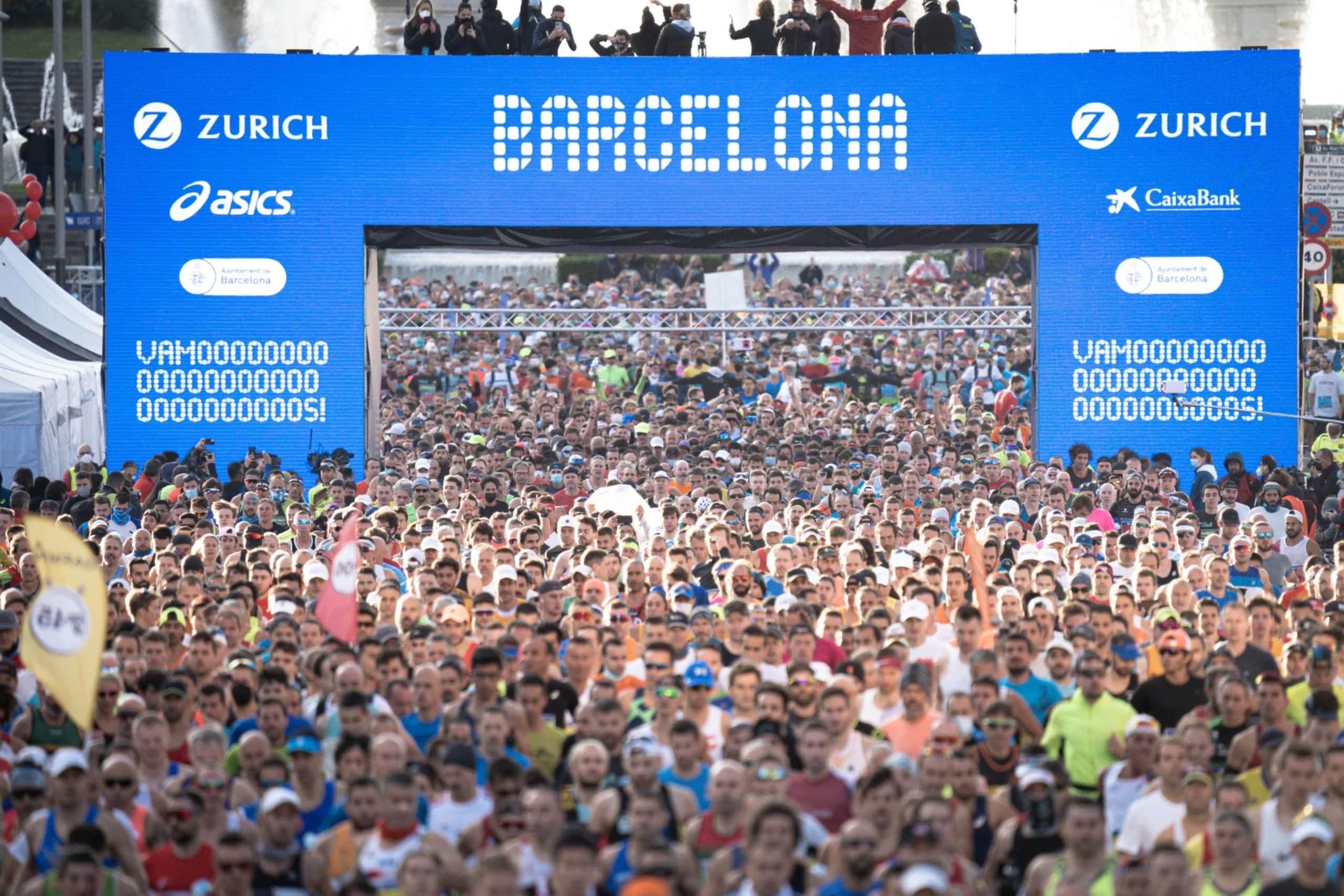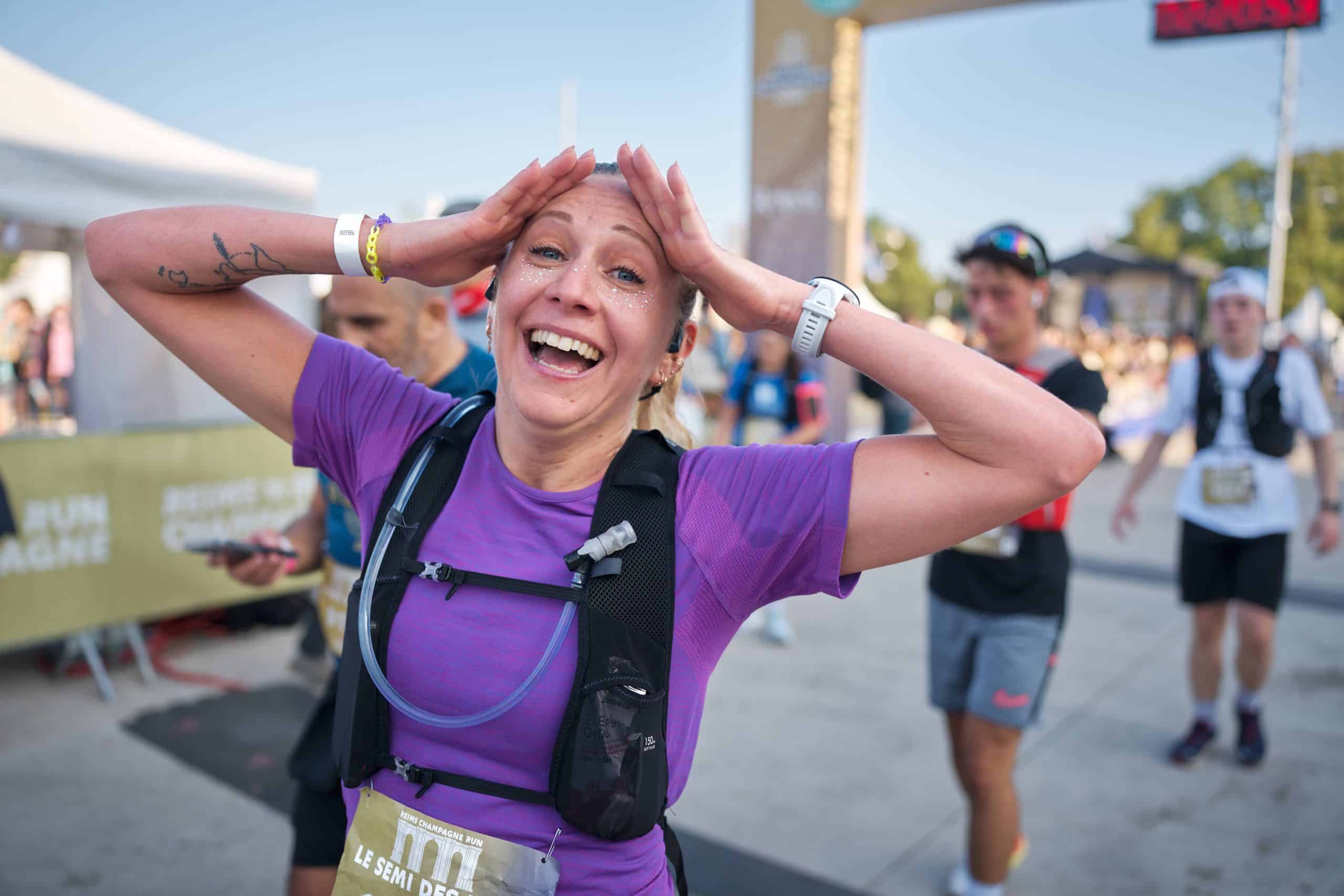Why You Should Run the Rome Marathon at Least Once in Your Life
In Rome, you don’t just run a marathon—you run through twenty centuries of history. From the Colosseum to the Vatican, the Rome Marathon is both a mythical race and an open-air museum. The course is fast, the weather conditions are often ideal—everything seems set for a strong performance. But amid this perfect setting lies one unique challenge: the Roman cobblestones. Charming for tourists, much less so for runners’ ankles. Our editorial team analyzed this very special marathon in detail.
| Rome: A Marathon Through History
The Rome Marathon is, above all, about atmosphere. The start line sits just steps from the Colosseum, and the finish inside the Circus Maximus makes runners feel as if they’ve stepped into a scene straight out of Gladiator. It’s hard to imagine a more epic stage for 42.195 kilometers.
Within a few strides, runners go from ancient myth to modern chaos—crossing majestic piazzas, winding through narrow streets, over bridges, past basilicas. It’s Italian charm in its purest form.
Hugo, who ran the race in 2023, remembers it fondly: “Rome was my second marathon. I absolutely loved it. Running up Via della Conciliazione toward St. Peter’s Square—completely closed to traffic for the event—was simply one of the most iconic experiences I’ve ever had.”
Certified by World Athletics with Elite Label status, the Rome Marathon is among Europe’s premier races. With aid stations every 5 km, an electric atmosphere in the historic center, and thousands of spectators lining the banks of the Tiber, it’s a true citywide celebration.
In 2025, more than 50,000 runners crossed the finish line across all events (5K, relay, and marathon), including 21,000 marathon finishers.
| A Course Built for Speed
While Rome is better known for its beauty than its records, the course is surprisingly fast and runnable. The current course records—2:06:48 for men and 2:22:52 for women—prove that speed is possible on the streets of the Eternal City.
With around 100 meters of total elevation gain (328 feet), the course is relatively flat. A few early climbs require some pacing strategy, but nothing extreme. Overall, it’s a smooth, balanced course.
Rome’s layout even favors a negative split—if you don’t get carried away too soon. Along the Tiber, long straight sections tempt runners to accelerate while the legs are still fresh and the city wakes up around them. But experienced marathoners know better: save energy for the final third, when a few late hills—and one particular challenge—await.
That challenge? The Roman cobblestones. Just when the final 12 kilometers already feel endless, the cobbles appear—between 30K and 40K, right when fatigue hits hardest.
“I loved the final 10 kilometers through the historic center. People warned me about the ‘cobblestone hell,’ but honestly, they were fairly wide and even—except for a few tricky spots, like the 180° turn near Piazza del Popolo. The last part winds through narrow streets, and the deeper you go, the more you feel like you’re entering the heart and soul of Rome. It was magical.”
Hugo, finisher at Rome
| The Roman Cobblestones: Technical, but Not Impossible
It’s often said that cobblestones “destroy your legs.” That’s only half true. In Rome, the cobbled sections represent about 20% of the course, and the surfaces have been improved in recent years.
Modern running shoes—with their thick cushioning—absorb impact better than ever. Still, ultra-light carbon-plated models can feel unstable here. On uneven terrain, stability beats speed.
The real challenge lies in managing everything at once. After 30 km, fatigue sets in and focus fades, yet runners must remain alert: watch your footing, avoid uneven slabs, keep your stride smooth, monitor your pace, refuel properly. It’s a lot to handle when the brain is running on low glycogen.
But that’s part of Rome’s magic—you’re literally running across centuries of history. The “sampietrini” cobbles, named after St. Peter’s Square, date back to the 16th century, worn smooth by chariots, emperors, and pilgrims. They define the city’s identity but can become dangerously slippery in the rain.
On these ancient stones, runners often adjust their form: shorter steps, tighter posture, eyes down, back tense. Many ease off by 5–10 seconds per kilometer to protect their joints before picking up speed again once they return to asphalt.
For Hugo, the fear of the cobbles was worse than the reality: “Honestly, they weren’t as bad as I expected. Most sections were fine, and the setting made it worth it. Running through those narrow streets at the end—you really feel like you’re part of something timeless.”
| A Finish Line Steeped in History and Emotion
After so many kilometers, the final strides take runners into the Circus Maximus, where Romans once cheered on chariot races and gladiatorial battles. Today, the weapons have changed—but the spirit of endurance remains the same.
Crossing the finish line among ancient ruins, surrounded by centuries of history, offers a moment of pure emotion—a mix of pride and awe that only the Rome Marathon can deliver.
Race Information
- Date: March 22, 2026
- Start time: 8:30 a.m.
- Edition: 31st
- Distance: 42.195 km
- Total elevation gain: ~100 m (328 feet)
- Participants: 50,000 total (21,000 in the marathon), representing 115 countries
- Course records: Tefera Fikre Bekele – 2:06:48 (2022) / Kebede Megertu Alemu – 2:22:52 (2019)
- Certification: World Athletics Elite LabelDate: 22 mars 2026
The Rome Marathon isn’t just about chasing a time—it’s a cultural and historical experience unlike any other. Running between the Colosseum and St. Peter’s Basilica, following the Tiber at sunrise, and finishing in the legendary Circus Maximus under the cheers of the Roman crowd—it’s a marathon you have to experience at least once in your life. Yes, the cobblestones add a touch of difficulty, but perhaps that’s what makes the finish even more rewarding. In a world of races built purely for performance, Rome stands apart—a marathon of emotion, heritage, and a true journey through time.
✔ Course map, registration, and full results: find all Rome Marathon details here.

Clément LABORIEUX
Journalist
